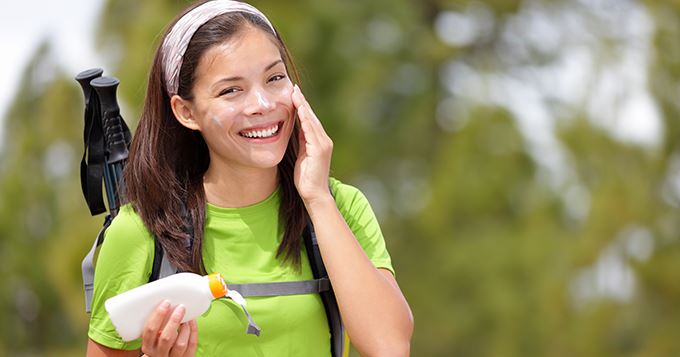It’s the time of year to be Sun Savvy
- Category: Health & Wellness, Skin Health
- Posted On:
- Written By: Lompoc Valley Medical Center

Did you know that unprotected skin can be damaged by the sun’s strong ultraviolet rays in as few as 15 minutes? You know that feeling – your skin starts to get warmer and warmer, and suddenly is looks redder than when you went outside. If you reach that point, it’s time to get out of the sun to avoid any more skin damage.
During this sunny summer season, the Centers for Disease Control and Prevention sends out this reminder – sun-tanned skin is damaged skin. Any time your skin shows a change of color after you’ve spent time outside, whether it be red sunburn or brownish suntan, that means your skin is damaged from UV rays.
Regardless of your skin type or hue, it’s important for your health that you protect your skin.
According to the CDC, three things determine whether you are more likely to burn or tan:
- Skin type (normal, dry, oily, or combination).
- Time of the year.
- How long you have been unprotected by the sun’s UV rays.
Too much exposure to UV rays can change how the skin feels, making it peel and dry. It can even cause your skin to age faster than normal, leading to wrinkles and dark patches, experts say. Sometimes, it can also cause skin cancer. The CDC warns that skin isn’t the only part of your body that can burn from the sun. Did you know your eyes can get sunburned as well? When that happens, your eyes become red, dry and painful, with a rough scratchy feeling.
If your eyes are exposed to an excessive amount of sun (which can also happen in a sunny, snowy environment), you can suffer long-lasting damage, including vision problems.
There are many helpful hints about protecting yourself from the sun’s rays, but it’s helpful every summer to recall them:
- Stay in the shade, especially during midday hours (10 am to 4 pm).
- Wear clothing to protect exposed skin.
- Wear a hat with a wide brim to shade the face, head, ears and neck.
- Drink plenty of fluids.
- Wear sunglasses that block both UVA and UVB rays.
- Avoid indoor tanning.
Health experts always recommend the use of sunscreen, but knowing which kind can provide critical protection. When using sunscreen, use SPF 15 or higher. Look for wording that indicates the brand “blocks UVA and UVB” or is “broad spectrum.” Apply to all exposed skin, and don’t forget ears, scalp, lips, neck, tops of feet and backs of hands. It’s critical to reapply sunscreen every two hours and each time you get out of the water or start sweating profusely. An added tip that’s not necessarily well-known – be sure to check the expiration date on your sunscreen, or throw away any sunscreen that is older than one or two years.
If you do your best, but still end up with a sunburn, there’s a few ways to get some relief from the discomfort or pain. Aspirin, acetaminophen or ibuprofen can relieve pain, headache and fever. Keep drinking water. You can also soothe the sting by placing cool, wet washcloths on the sunburn, and using a moisturizing cream or aloe gel to get more relief.
If the sunburn is so bad that your skin blisters, be sure to cover the area with gauze to prevent infection. Apply antiseptic ointment on broken blisters. You should seek medical care if the sunburn is so severe that it covers more than 15 percent of your body or you begin to experience the symptoms of dehydration. Also, if you have severe sunburn and experience a fever of higher than 101 degrees, or if you are in extreme pain lasting more than two days, seek medical care.





